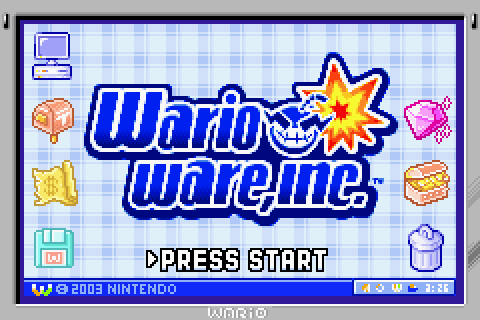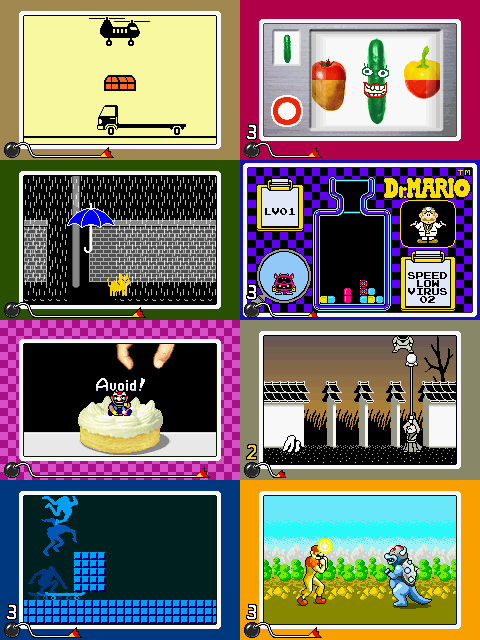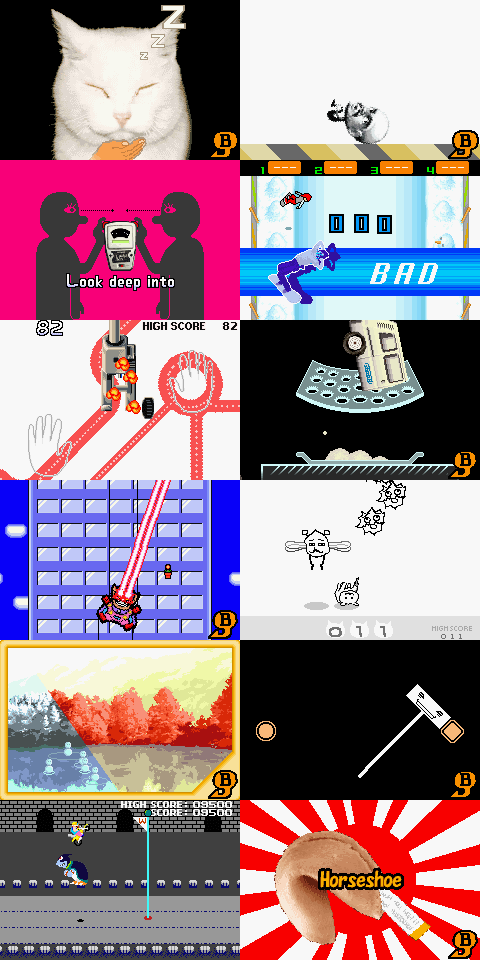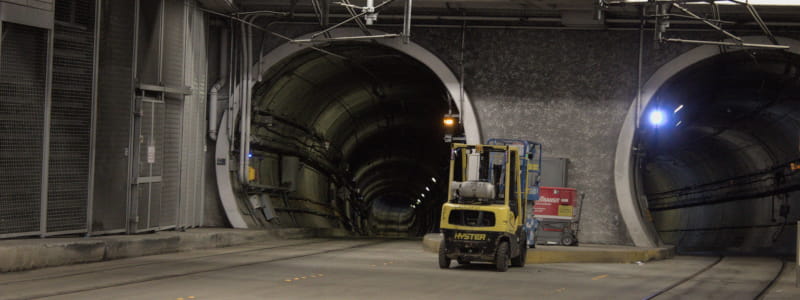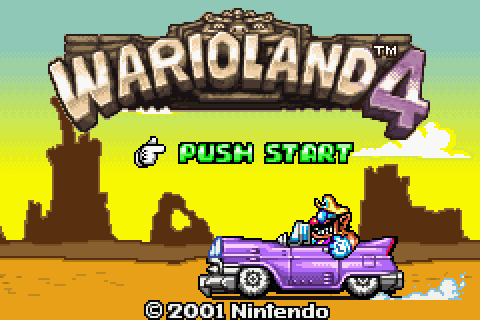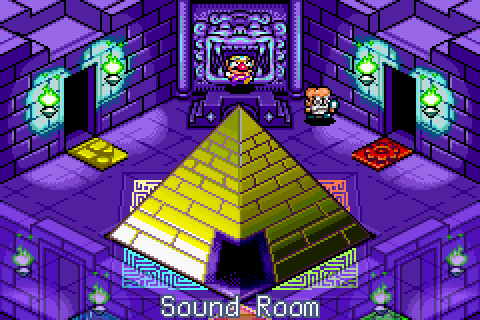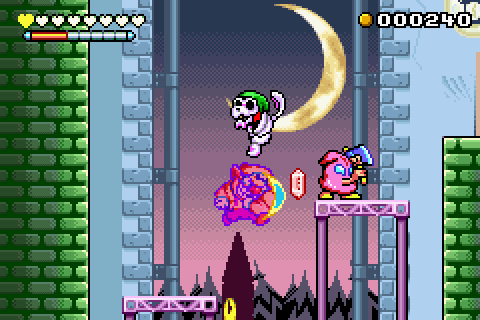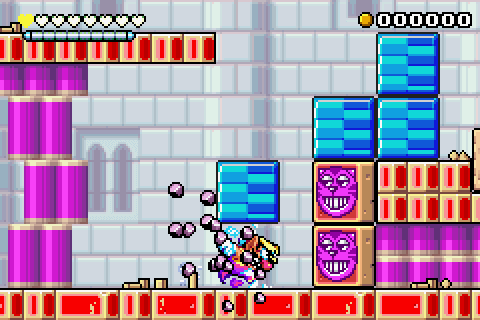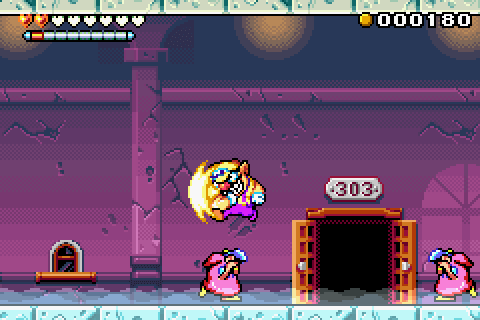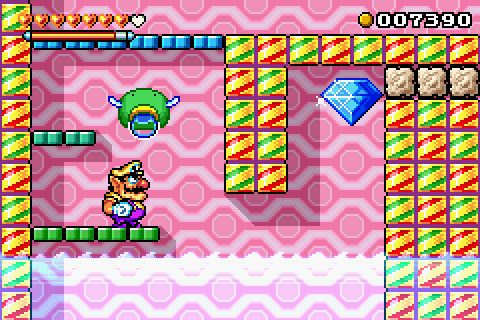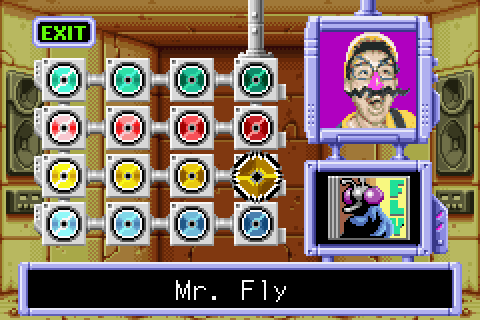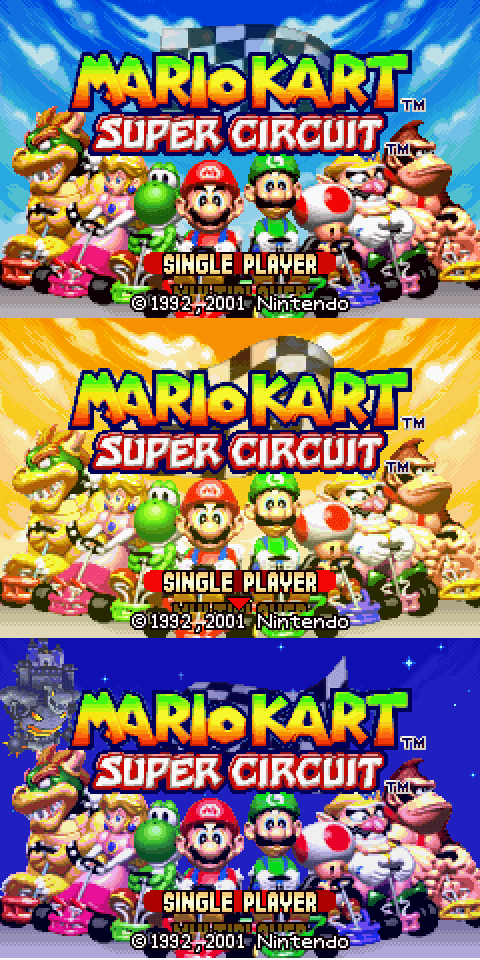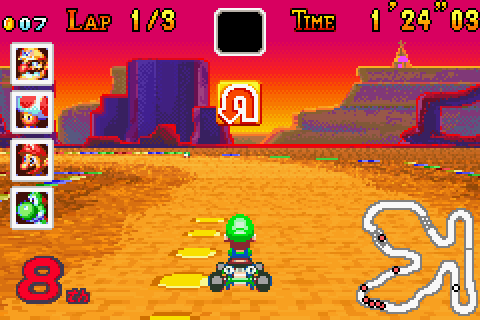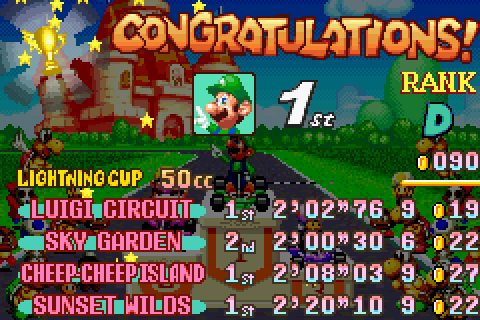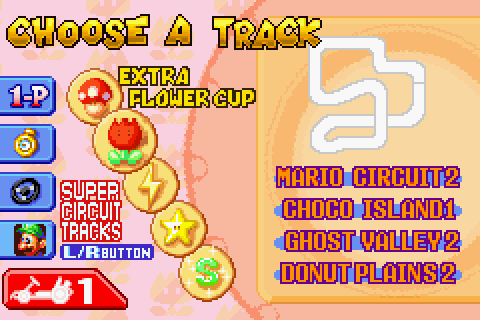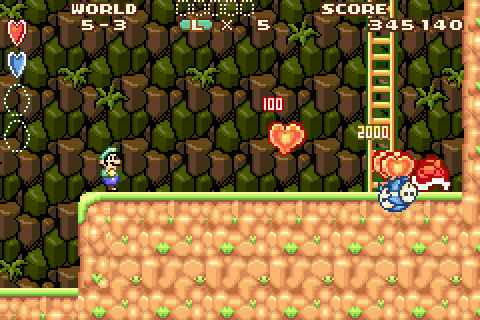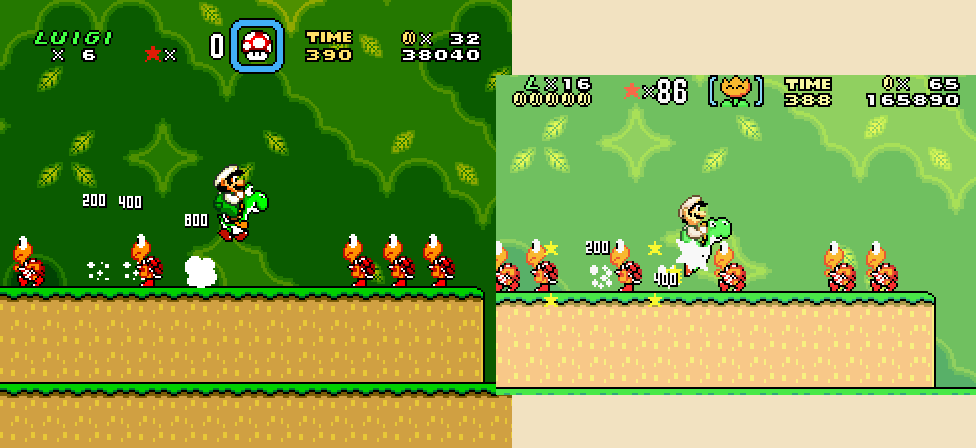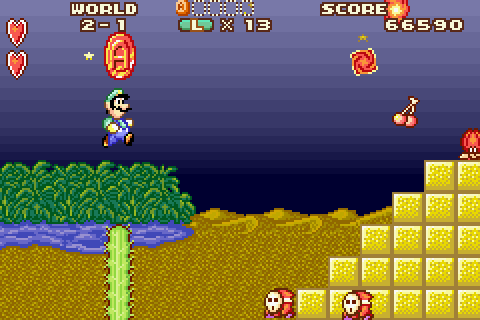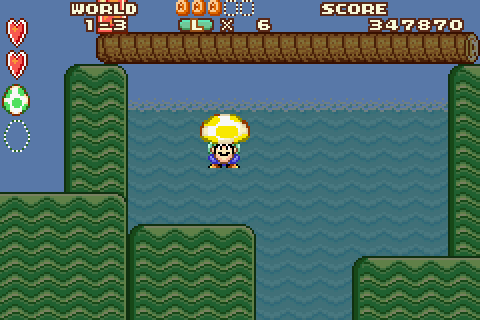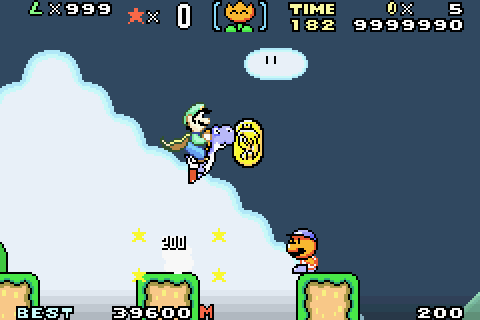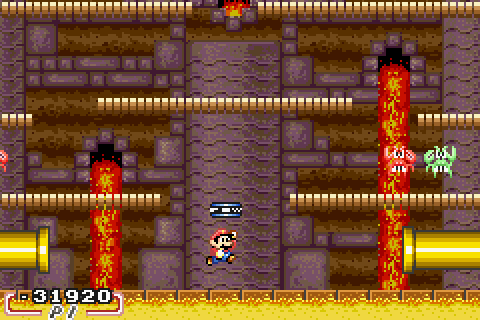SimCity (SNES)
Composer: Soyo Oka
The PC version has no music, if I recall; but the SNES version’s superior, anyway, & it has amazing music.
While the latter games had mo’ jazzy tunes, this 1’s were symphonic; & I must confess, I prefer this game’s to the later iterations’, e’en if there’s not as big a variety.
Title:
The game starts with the most beautiful song in the game, which later in is mixed with some o’ the harshest beats in the game: what sounds like thwacking wood. It certainly fits the visuals o’ the starry city @ night.
It could also be thought o’ as the game rising into action: think those scenes o’ nature where that serene music plays, & then everything comes to life with noises. This is the urban version.
Menu:
The deep, guttural beats mixed with the ticking beats like clock arms going into a solo clearly mean to give a businesslike mood to a boring-but-practical businesslike game mode.
Level Themes:
The songs seem to rise in energy the higher one gets, from the laid-back, almost country-like Village theme to the bombastic Megatropolis theme.
I’m also not sure if my brain’s making this up ’cause it wants to, but it seems that each theme fits the theme o’ their level:
Village:
As I mentioned, it has a village-like twang to it, like just waking in the morn.
Town/City:
Similar—so similar that I sometimes have trouble differentiating them. They both seem to have the calm atmosphere o’ the average day walking down the street. I think I think this ’cause they sound almost like elevator music & ’cause some o’ their sounds are similar to the kind o’ beeps you’d hear in traffic. ‘Gain, I don’t know if my mind’s manufacturing the association or if it’s intentional.
1 difference I noticed ‘tween these 2 is that the City song has that rapid “dee-dee-dee-doo-doo-doo” that sounds mo’ modern & mechanized, like a slot machine. This will continue to the next level…
Capital
This song takes the modern, mechanized sound from City all the way. While actually slower than the previous 2—’specially @ the beginning, where it seems to lose the laid back nature, only to regain it for the rest o’ the song—this seems to have mo’ strum to it in a somewhat awkward mix o’ heavy modernity & slow serenity. This is the major transition point in the game, & thus where the music starts getting heavier. This is also where the last remnants o’ the past songs’ serenity will lie.
Metropolis
Fuck yeah. This is where the heaviness engulfs the entire music so that it’s almost a rock song with heavy beats & that strange metallic scratch sound that sounds almost like a guitar riff.
& it fits the mood: this is the climax o’ the game, the last song before the end o’ the game (or rather, when you’ve accomplished as much as you can). One could think o’ this as the final boss o’ the game. Oddly, it’s almost likely the longest part, too, so a’least they picked the strongest song as the 1 you’ll hear the most.
Megatropolis
After Metropolis’s strum, it may be a surprise to fall back into a calmer, though also mo’ hyper, song. But it does make sense when one considers that this is pretty much the end o’ the game—& it sounds almost like credits music, vacillating ‘tween bouncy & slow, melancholic falling.
Good Night:
Here’s a beautiful melody with bellows so thick they sound like they’re underwater, just for the people who for some reason use this option, e’en though most could probably just shut the system off anytime.
Then ‘gain, maybe that can damage the battery; that might ‘splain why my copy loses its saves all o’ the time.
SimCity 2000
Composers: Brian Conrad, Sue Kasper, & Justin McCormick
All o’ SimCity 2000‘s versions have near the same kind o’ music, just with different instruments in some versions. (I generally prefer the PlayStation’s to the PC’s bland MIDI.)
An anomaly, SimCity 2000‘s music is much jokier than its bretheren’s jarringly serious music. Though they sound somewhat jazzy, they’re much mo’ short, catchy li’l ditties than the long, complex jazz solos that comprise the later games.
Virtual Village
Fuck yeah, this is the greatest song e’er. I almost prefer the MIDI version, actually, only ’cause its cliché beachlike instruments only add to its humor.
Sadly, the full version o’ this song is actually hidden in the PC version. I only know ’bout it ’cause I loved this game’s music so much as to dig round this game’s files to find the songs themselves & found it in there.
The short version happens usually when you place a park down, for some reason. ‘Cause o’ this, when I was li’l, I’d put them down all o’ the time.
Harbor Hymn, Traffic Trouble, City Shimmy, Disaster Decision
Actually, some o’ these songs can be rather melancholic. That songs called “Traffic Trouble” & “City Shimmy” can be so down is amusing. I’m not sure if it’s artificial associations ‘gain, but I believe “City Shimmy” usually plays after a disaster, like a fire. It sounds like a disaster has just hit, that’s for sure.
Then ‘gain, maybe it’s “Disaster Decision”; but I swear I remember it being “City Shimmy.” That, or my songs have their names mixed up for some reason.
Mayor Mambo
Was this truly associated with good events, or is that my mind ‘gain? Did this game psychologically manipulate me through its music?
Subway Song, Railroad Rap
For some reason, “Subway Song” sounds mo’ like a rap song—an early 90s rap song, like Fresh Prince, which is fitting, since that’s when this game came out.
SimCity 3000
Composers: Jerry Brown, with Kirk Casey, Kent Jolly, Anna Karney, Robi Kauker, & Marc Russo
Though a lot o’ these songs are unremarkable, a few are gems; & e’en then, the unremarkable songs a’least add atmosphere—well, ‘cept for “Desert Sand,” which doesn’t seem to fit @ all.
Though I read many emphasis the title song, “SimCity,” I always found it 1 o’ the least memorable songs. If I were to name a song that 1st comes to mind when thinking o’ this game, it’d probably be “South Bridge,” “Updown Town,” or “Central Park Sunday,” all o’ which have a lazy-Sunday tone that I always thought fit the laid-back game itself.
I don’t remember if this game had day-&-night cycles as 4 did, but I’m led to think it did thanks to the music, which seem to bring out the mood o’ day & night. The 3 songs I mentioned earlier depicting morn or early afternoon, & “Night Life” & “Magic City” depicting night.
I think 1 reason these 2 sound so much like night—other than the former having “night” in the name—is that they have a contrasting mix o’ deep, low background music with mo’ high-pitched music popping in & out, which feels like the audible equivalent o’ the bright light o’ streetlamps or windows popping in & out in an otherwise dark city. ‘Gain, I can’t pretend to know if this was intentional on Jerry Martin’s part.
1 difference ‘tween these 2 songs is that “Night Life” has a consistent laid-back, but peppy mood, while “Magic City” goes back & forth ‘tween low & lazy & rising & bright, making the former feel mo’ like prime time & the latter feel mo’ like near midnight, the final song before going off to sleep. That it has mo’ noises o’ city ambiance heightens this effect, as the quiet night is when such noises usually come to attention.
Then ‘gain, I’ve associated other songs that rely e’en mo’ on such ambiance, such as “Illumination” & “Sixth Floor,” with afternoon, so perhaps my mind made up these associations out o’ nowhere. Maybe it’s cause they seems to have higher-pitched sounds than “Magic City.” But then ‘gain, “City Lights” is rather on the higher end, & I always associated it with night. “Magic City” & “City Lights” do seem to have a softer, mo’ modern sound, while “Illumination” & “Sixth Floor” seem harsher & dirtier. When I imagine the former 2, I imagine elevators or swanky hotels, while the latter 2 make me imagine rusty subway walls.
SimCity 4
Composers: Jerry Martin, with Andy Brick & the Humble Brothers
4‘s music seems less remarkable than 3000‘s, though that may be nostalgia bias. Then ‘gain, I also feel nostalgia for 4, so maybe not so much.
Its music seems mo’ techno-based than 3000‘s, which was mo’ jazz-based, which may ‘splain part o’ that. Much o’ the ambiance sounds less like ordinary city sounds & mo’ like weird alien sounds, which seems to make it lose some o’ the urban tone that 3000 had. On the other hand, it does make the music stranger, making it better fit the game’s tone. 3000 almost sounded weird with its touching music applies to a rather silly game.
It’s not that it’s music is bad. I particularly find “Night Owl” to be catchy, the way it mixes deep beats with higher-pitched sounds & ambiance. & “The New Hood,” “Crosswalk Talk,” & “Transit Angst” practically sound like hip-hop songs, which gives them an urban flavor that some o’ the other songs lack.
In a way, it’s sort o’ a bridge ‘tween 2000‘s catchy silliness & 3000‘s jazzy seriousness.
SimCity Societies
Man, nobody e’en cares ’bout this game.
SimCity 2013
Composer: Chris Tilton
I’ve ne’er played this game, so I fear I may be unable to do it the justice I give the others.
& unsurprisingly, I didn’t find its music as interesting. This 1 goes kilometers past 3000 in seriousness; but whereas 3000 still maintained a brisk energy to its music, 2013‘s, to be honest, makes me want to fall asleep. It sounds too much like generic Hollywood music—the kind o’ ambiance that’s impossible to pay mo’-than-subconscious attention to. You’re building a city; not saving the planet from aliens, for god’s sake (though, now that I think ’bout it, I’m not sure if you don’t do that).
A few songs I did kind o’ like:
Clean Build o’ Health
This is probably the closest it gets to 3000-like music, with the bulk o’ this music coming from city-like ambiance, like in “Illumination.”
Living in Infrastructure / Town & Out / Urban Sprawler
1 thing I do kind o’ like ’bout 2013‘s music that’s different is the acoustic guitar, which sort o’ reminds me o’ a much mo’ cheerful version o’ Diablo music.
What “Town & Out” & “Urban Sprawler” seem to have that I like is this sort o’ drawn-out, echoing guitar twang.
Cities of Tomorrow / November 2019
These have a nice deep bass beat matches with a rising symphonic beat—it’s the same bass beat in both o’ them, though “Cities of Tomorrow’s” brisker—to them, slowly rising & falling. Sounds mo’ like space music, though, which is odd for a city-builder.
Footnotes:
